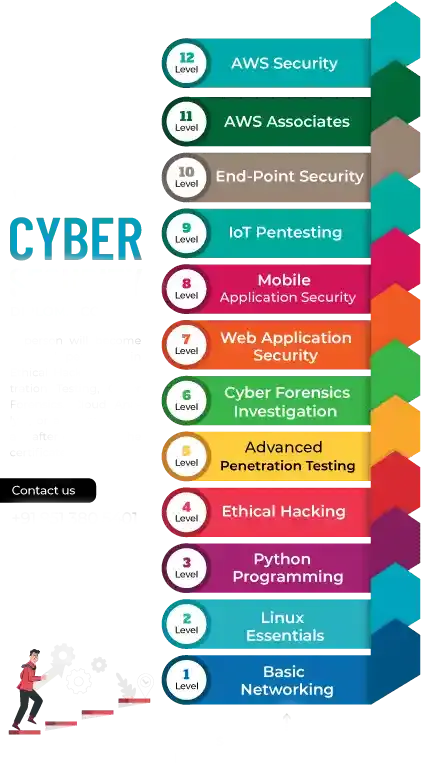Learn How To Write Blocking Techniques | Digital Forensics

Learn How To Write Blocking Techniques | Digital Forensics
Learn How To Write Blocking Techniques
Write Blockers: An Introduction
Cyber Forensics needs are growing day by day as most evidence is going online and the methodologies of varied criminals have changed at a rapid pace. Now, we need to obtain more concrete proof from online or digital assets possessing hard drives. In this case, Forensic investigators are required to undoubtedly confirm the factor that the information they have extracted as digital evidence is untouched during the capture, accounting, and monitoring.
Moreover, during the trial event within the courtroom, everyone, including lawyers, solicitors, judges, and jurors, ought to sense utmost confidence that the corresponding digital evidence has not been altered and is highly fair throughout the trial. In addition, it is so hard to understand how you can be assured that digital evidence has not been tampered with.
Further, as per a renowned organization – NIST (National Institute of Standards and Technology), forensic researchers who function on any platform to extract any kind of digital evidence will certainly follow a series of laws and regulations to safeguard the implementation of any particular program that might alter the contents of the disk. Moreover, some of the famous methods are as follows:
- The usage of an operating system and some other varied software is considered not to write anything on a particular disk without any quick guidelines.
- Employing hard disk write block tools to safeguard any special hard disk writes.
- One should set a hardware jumper wherever is possible to build the disk read-only.
In this article, we will be discussing the following key areas:
What are Write Blockers?
Basically, Write Blocker is a tool dedicatedly designed and developed to secure any individual write access to the hard disk, therefore allowing read-only access to the data storage devices, maintaining the integrity of the original source of data untouched. In addition, if write blocking is employed in a decent manner, it can genuinely protect the chain of custody. Moreover, one should also give prime concern that NIST has circulated a series of basic guidelines for write-blocking needs as the write-blocker tool shall not do the following activities:
- Allow a protected drive to be altered.
- Prevent any operations to a drive that is not protected.
- Prevent acquiring any information from or about any drive.
What are the different types of Write Blockers?
On a general note, Write Blockers are of 2 sorts: Hardware Write Blocker and Software Write Blocker. Moreover, both sorts of write blockers are intended for the common target, which is to secure any particular writes to the storage devices. Now, let’s have a look at every sort of write blocker in
Both types of write blockers are meant for the same purpose, which is to prevent any writing to the storage devices. Let’s discuss each type of write blocker in explanation:
Hardware Write Blocker:
This kind of Hardware Write Blocker is genuinely utilized to intercept and block any altering direction as a command from ever achieving the storage device. Moreover, some of the prominent characteristics comprise the following:
- Hardware Write Blockers provide control and filter any particular happening that is sent or received between its port links to the computer and the storage device.
- They also offer in-built junctions to a series of storage devices.
- They even can link to other types of storage equipment with adapters.
- Moreover, the hardware devices that usually write blocks do also offer a visible sign of operation via LEDs and switches. Furthermore, this makes them easy to utilize and builds operability obvious to users.
Challenges of using Hardware Write Blockers:
Now, we would like to discuss a few challenges that we face while utilizing hardware-based write blockers as follows:
- These devices of Hardware Write Blocking are pretty much expensive.
- Hardware Write Blockers are sincerely uncomfortable for usage since they need a physical link and a distinguished connector for every type of interface for IDE, SCSI, USB, etc.
- They are slower as they require executing protocol conversions.
Software Write Blocker:
These types of Write Blockers are duly installed on a forensic workstation. As per the NIST’s specification on Software Write Blocker, this particular tool performs by controlling and filtering drive I/O commands transmitted from an app or operating system through a given access interface. In addition, these Software Write Blockers offer the capability to simultaneously write blocks as many disk devices as are linked to a computer without the requirement of several costly hardware write blockers.
However, some of the high-end characteristics that are offered by distinguished write-blocking tools are as follows:
- The performing agent can sincerely manage automated write-blocking guidelines for static and/or detachable disks.
- In addition, the user can prominently have a write-blocking tool to memorize every static device’s blocked or unblocked status for confirming the comfort of the utilization of media continually utilized on a workstation.
- Moreover, some write-blocking tools offer a GUI port that permits the user the capability to prohibit and open any disk or flash storage device.
Benefits of using Software Write Blockers:
It is nothing like that you would have only drawbacks of utilizing the Software Write Blockers. There are certain benefits that you can have from using Software Write Blockers in place of Hardware Write Blockers:
- Software Write Blockers provide imaging at a faster pace than utilizing Hardware Write Blockers.
- They are cheaper than their hardware counterparts as they do not require a specialized physical link to be connected to the particular computing device or workstation for write blocking.
What to Look for in a Write Blocker?
One should keep in mind some general rules while buying a write blocker as they genuinely depend on the specific requirements. However, some of the prominent rules that we suggest to our users are defined below:
- We suggest using hardware write blockers instead of software ones, even though we understand that hardware write blockers are costly and so dull while operating. Moreover, the reason behind that is the hardware write blockers function solely from your laptop/ workstation, while the software write blockers can be affected by OS updates and numerous other corresponding factors.
- The Hardware Write Blocking Equipments have additional visual markers such as Red/ Green lights and a particular text area on the screen to validate that the data processing is sincerely secured.
- It is highly recommended that you confirm that the write blocker is fully compatible with the advanced format drives. In addition, one should also keep in mind to select a write blocker that backs the most common Advanced Format type of 512e (emulated 512 bytes).
- Certain write blockers permit you to swap between read-only and read/ write modes. Always select the ones that permit the swapping option for the sake of your convenience, as it will benefit you genuinely when you require to link the system through SATA cables or IDE Drives.
Frequently Asked Questions
About Learn How To Write Blocking Techniques
1: What does a write blocker do?
Write Blocker is a tool dedicatedly designed and developed to secure any individual write access to the hard disk, therefore allowing read-only access to the data storage devices maintaining the integrity of the original source of data untouched.
2: What is a write blocker in forensics?
A Write Blocker is technically a device widely used in computer forensics that permits one to read the info on a particular drive without the possibility of modifying or writing to the drive content harming the integrity of the original document willingly or unintentionally.
3: Which type of tool is a write blocker?
There are 2 types of write blockers duly available in the market:
- Hardware Write Blockers
- Software Write Blockers
4: Is autopsy a write blocker?
The autopsy can examine a local drive without requiring preferably complete image replication of it. In addition, this is most helpful when scrutinizing a USB-attached instrument through a write blocker. Do record that if you are studying a local drive that is being revised, then the Autopsy will not catch files that are counted after you add it as a data source.
Conclusion
To wrap up, we would like to add in the final comments that Digital Forensics do need the Blocking Tools so dedicatedly to make sure that the integrity of the original copy of the evidence keep intact and making sure that the evidence is fool-proof and duly admissible in the law of court. In addition, both types of Write Blockers are highly advisable to be used by distinguished forensic experts working in different parts of the world, and we are not endorsing any particular version or any specialized brand in this article.



















Fashion Styles
Thank you for your articles. They are very helpful to me. May I ask you a question?
Haircuts
Good web site! I truly love how it is easy on my eyes and the data are well written. I am wondering how I could be notified whenever a new post has been made. I’ve subscribed to your RSS which must do the trick! Have a nice day!